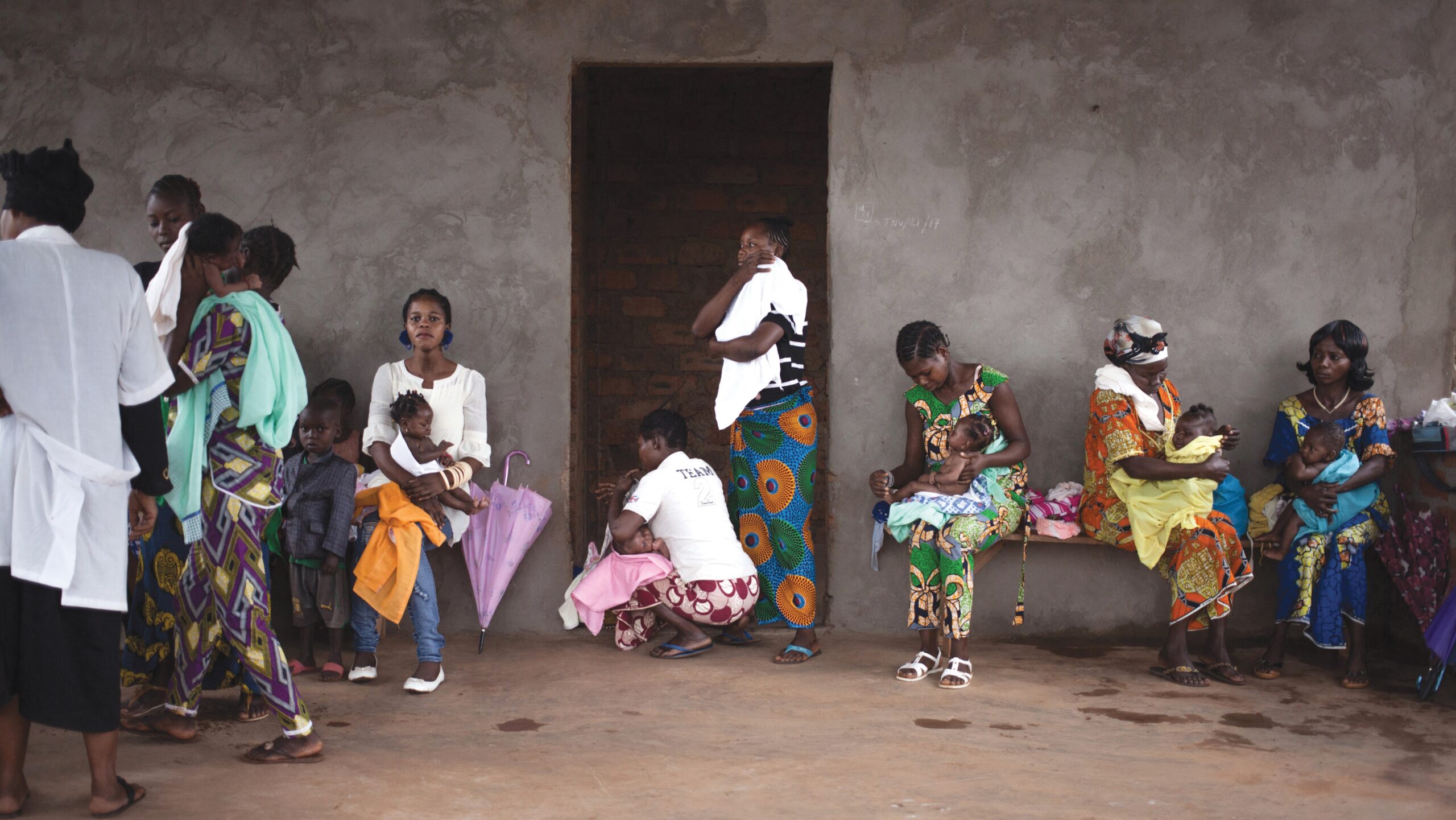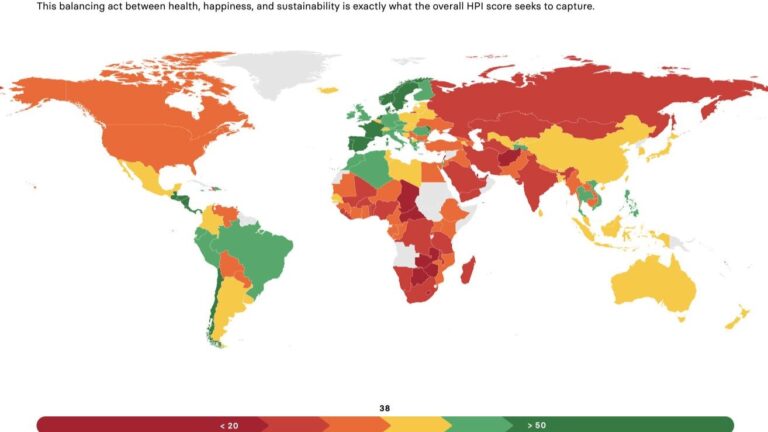This article was published in Vol. 4 No. 2 of our print edition.
In October 2016, when the author was stuck in a traffic jam in Cairo, happened to pass the headquarters of the Egyptian Statistics Office, at the top of which a giant projected image displays the country’s population growth. It was shocking to see that the overall population (with total deaths subtracted from total births) had increased by thirty thousand people in just a few days. Ultimately, in 2020, the display had to be replaced because the population of Egypt officially exceeded 100 million people, and the population clock could not display the additional decimal place. Currently, a baby is born in Egypt every 20 seconds. On a longer timeline, this has meant one and a half million children a year, over thirty-five years. It is no coincidence that even the conservative Egyptian leadership has started talking about the challenges posed by such a rapidly increasing population.1
The demographic situation of Egypt and the African continent in general is of central importance in terms of all geopolitical elements, including security, society, the environment, and the economy. Although some people see a virtually endless young workforce within a growing population as an exploitable opportunity, more and more people are talking about the challenges such a situation poses. While the rate of expansion has slowed dramatically, by 2050 there will nonetheless be 2.5 billion people living in Africa instead of the current 1.4 billion.2 Scientific studies in this field typically consider a fertility rate of less than four live births per woman to be the threshold of the ‘lower category’, which means, for example, that Egypt’s indicative rate of around 3.1 shows a welcome reduction. The conclusion of a much-cited study by Jean-Pierre Guengant and John F. May, which argued that the demographic transition in these countries is ‘already completed or close to completion’3—meaning that low mortality rates are associated with low fertility rates—is correct from a historical perspective, but this is unlikely to provide much succour to governments struggling with the phenomenon over the coming decades: they have to facilitate education and healthcare for millions more citizens every year. Not to mention the fact that the African population is not only growing thanks to an increasing number of births, but also increasing life expectancy: today, life expectancy at birth on the continent is 64.1 years, while at the turn of the millennium it was only 52.81.4 All this means that African countries not only have to take care of masses of young people, but also an older generation that is increasingly dropping out of the labour market.
To understand population trends on the African continent, it is essential to briefly present their history, as well as the roots that feed the current explosion. After all, it is important to bear in mind that the demographic processes of the present are fed by those of the past; many elements were decided decades earlier, and change is usually very slow. It is no coincidence that Guengant and May consider the processes of the future to be the ‘heritage of the past’: taking into account the proportion of minors, for example, it is already certain that the number of working-age inhabitants of the continent will, whatever happens in the coming years—except perhaps for an apocalyptic catastrophe—rise from 466 million in 2010 (354 million in the sub-Saharan region) to 774 million (616 million in the sub-Saharan region) by 2030. And by 2050, the number of people between the ages of twenty and sixty-four will at least double, and is likely to almost triple.5 According to the latest UN projections for 2022, by 2050 there will be no continent with a population still increasing due to natural reproduction—with the exception of Africa. It is also telling that in the two and a half decades until then, Africa will account for more than half of total population worldwide.6
The Legacy of the Past
Based on the accepted scientific consensus, Africa is the cradle of humanity: our ancestors set out to populate the Earth from somewhere in the Great Rift Valley in East Africa. The continent later witnessed the rise of ancient Egypt, one of the first state formations. Despite this, conditions on the continent are considered far from idyllic for human life. The vast deserts, dry climate, regular droughts, impenetrable primeval forests, diseases, and often poor-quality agricultural land have never made day-to-day survival easy.
‘The main reason why Africa has barely been affected by the demographic transition is to be found in its historical circumstances’
As Gábor Búr points out in his article, based on the knowledge available to us, the population processes of the African continent followed roughly the same trends seen elsewhere in the world until the modern era: slow growth that was not without setbacks.7 Later, however, primarily due to the boom in the slave trade, the continent was separated from other regions in terms of its development. Between 1600 and 1900, we witness a kind of stagnation: for this period, various estimates place the continent’s population at between 90 and 140 million.8
In African cultures, as in all traditional societies, the extended family was the basis of social organization. One of the important—but by no means exclusive—reasons for this was that children functioned as a kind of social security: their task was to provide support and livelihood for their parents when the latter reached old age. Due to high child mortality, to ensure this, families had many children, as this increased the chance that one of them would make it to adulthood and take care of them. At the same time, mortality rates prevented overpopulation, since only a part of those born reached reproductive age. The figures in this regard are sometimes shocking: in London, in the early 1730s, 74 per cent (!) of children did not reach their fifth birthday.9 Although there are no comparable statistics for Africa, rates may have been similar, and we would not be far wrong if we estimated that, on average, no more than one in two young children reached their fifth birthday.
The major turning point in Europe came with the Agricultural Revolution, followed by the Industrial Revolution. Thanks to new agricultural techniques and crops, the yield rate increased, which provided a greater range and quantity of food for the population, while at the same time enabling a significant number of people to engage in other economically productive activities. This marked the first time since the emergence of Homo sapiens when 90 per cent (or more) of humanity no longer had to make their daily living by gathering, hunting, cultivating crops, or keeping farm animals because a smaller segment of the population could adequately perform the tasks of food production. The labour thus freed up then enabled the Industrial Revolution to gather pace, and the free hands necessary for its operation to appear on the labour market. The achievements of the Industrial Revolution further reduced mortality rates, primarily through revolutionary changes in health care, hygiene, and transportation. The explosive rate of development is well illustrated by the fact that by the 1820s the rate of deaths among children under five in London had halved to 31.8 per cent—albeit this is still a very high rate.10
Through colonization, the results of the European Agricultural and Industrial Revolution slowly reached other parts of the world. The discovery of vaccines was another breakthrough in this process, and the regions of North and Latin America and Asia entered the era of demographic transition from, at the very latest, the early twentieth century. In this process, the decrease in child mortality was at first accompanied by a huge, exponential population explosion thanks to the traditional large family model. While previously only two or three of the four to six children born would typically have reached reproductive age, by the beginning of the twentieth century it was typical for only one or two of them to die—and rates continued to improve from generation to generation. Between 1700 and 1900, the population of Europe quadrupled (from 100 million to 400 million),11 that of the Indian subcontinent grew from 125 million in 1750 to 389 million by the middle of the twentieth century,12 and the population of the United States grew—partly thanks to immigration—from 5.3 million in 1800 to 106 million by 1920.13
The global population explosion peaked sometime in the 1960s, and fertility rates in most regions began to decline thereafter.14 This was caused—in very simple terms—by two main factors. One is that the wealth generated by the Industrial Revolution enabled the development of social care systems, namely the state pension and health insurance. This meant that it was no longer children, but rather the state that took care of elderly or sick citizens. The extent and quality of this differed from place to place, as it continues to do today, but the fact is that systems of social care have taken root almost everywhere. The other key element was the entry of women into the labour force: after many millennia, women were no longer restricted to giving birth to and raising offspring and managing the household but entered the competitive labour market. This strengthened their social security and independence and limited the time in which they could have children. The rise of modern contraceptive devices and medical abortion also played a major role in lowering birth rates.
Together, these elements accelerated the demographic transition from a high-birth-rate–high-mortality model to the low-birth-rate–low-mortality model, which went hand in hand with significant increases in average age. Europe was at the forefront of this process: the period between 1850–1900 saw birth rates peak, with annual population growth of around 0.71 per cent, which then significantly decreased by 1950,15 and today it has fallen to such a point that there is no country on the continent in which fertility rates reach the 2.1 total fertility rate necessary for population maintenance—the only reason it occasionally seems to cross this threshold is migration.16 But the other continents are also following Europe’s example—it is merely that they are slightly earlier in the process.
The only exception is Africa. As already noted, by 2050, the growth of all major regions will stop, except in Africa (and Oceania, which is of negligible importance in global population terms). Three-quarters of the projected four billion additional people projected to live on our planet by 2100, three-quarters will be in Africa.17
The main reason why Africa has barely been affected by the demographic transition is to be found in its historical circumstances. The continent only joined the capitalist world system in the mid-to-late nineteenth century—the latest of all the important global regions. As a result, the typical consequences of adopting this model were significantly delayed in Africa. The healthcare revolution, the development of agriculture, and industrialization all began later. Nevertheless, the continent entered upon its demographic transition at an astonishing speed: between 1900 and 2024, the number of Africans rose from an estimated 90–140 million to 1.4 billion, making it the largest population explosion in history.
A major challenge for Africa was that fertility rates were already high, which provided the right background for exponential growth. Moreover, the factors that contributed to the relatively rapid course of the demographic transition in other regions appeared much more slowly in Africa.
Referring back to European processes, mortality rates in Africa were also significantly improved by improvements in healthcare, the spread of vaccinations, and more reliable access to food. On the other hand, the elements that elsewhere moderated overpopulation after the first decades were much more muted here. In the case of Asian countries, industrialization—sometimes combined with direct state intervention—brought with it, after a few generations, a decrease in the desire to have children. Africa’s problem is precisely that its industrialization was in its infancy even during the period of decolonization, and no meaningful breakthrough has taken place since then. From the 1960s to the 1980s, serious progress was made in this area, but shifts in the world economy, political instability, and unexpected events such as the oil price explosion significantly hampered process. As a result, some people even began to speak about the ‘deindustrialization of Africa’, especially at the beginning of the twenty-first century. Between 1980 and 2008, the share of the productive sector in Africa’s GDP did not increase at all and in fact dropped from 12 to 11 per cent. Industry employs only 6 per cent of the continent’s workforce—a figure which has barely changed since the 1980s. In Asia, during the same period this ratio changed from 11 to 16 per cent. Poor-quality and fragmented infrastructure, corruption, unskilled labour, regional instability, and the new wave of coups in the 2020s do not entice investors: it is no coincidence that, for example, the majority of Chinese companies are relocating their processing activities not to Africa, but to Bangladesh or Vietnam.18
One serious obstacle to industrialization is that the enormous wealth of raw materials does not encourage local elites to diversify their economies since at first glance they still seem able to achieve good results in terms of growth. At the same time, several authors point out that Africa is wasting its own future, despite its apparently impressive GDP indicators, with its economies primarily geared towards the export of raw materials and without a substantial manufacturing industry.19
Without industrialization, the majority of African countries still have not entered the industrial age: half of the continent’s population is still employed in agriculture, but this sector produces only 15 per cent of the continent’s GDP.20 A direct consequence of this is that there has been no breakthrough in the social system or the status of women in Africa: states are unable to collect enough taxes to operate pension systems or health insurance. This is only partly helped by the strengthening of the service sector, which, however, cannot completely replace the processing side. Even in those states where meaningful attempts have been made, the results are quite modest—at least compared to countries with a genuinely strong social care network.
‘A broad, well-thought-out action plan is essential. In addition to mitigating the demographic explosion, this would also deal with other already unavoidable realities’
Within the continent, in addition to regional differences which we shall turn to later, the biggest contrasts can be seen in the relationship between the big cities and the countryside, which show huge differences even within individual countries. In the Ethiopian capital, for example, the fertility rate is similar to that in the developed world, and most women do not have more than two children, whereas the average woman in the countryside has six or seven.21 In Nairobi, the author talked to a variety of people, from taxi drivers to members of the upper middle class, and the vast majority of them had three, two, or even just one child. When asked why, they gave the same answers typically heard in the developed world: it costs a lot to bring up and educate children and to provide medical care for them.22 In the countryside, by contrast, three or four children are still common, meaning that Kenya’s total fertility rate is 3.3.23
The fact that this trend can be observed in cities—even those that have been only lightly affected by globalization, such as Addis Ababa—gives some cause for hope. Modern contraceptive devices spread much faster in cities than in the countryside, and their use—in many areas still a taboo subject—can be better hidden from the prying eyes of neighbours. At the same time, there are huge differences between the UN’s 2004, 2010, 2015, and 2022 estimates: the first estimated only 2.3 billion inhabitants of Africa by 2100, rising to 3.5 billion six years later, then most recently to 4.4 billion24—stemming from precisely the fact that modern contraceptive devices are spreading more slowly than expected. As the authors Guengant and May point out, while in Asia, for example, their use among the population exceeds 60 per cent, in Africa—especially the states of the sub-Saharan region—it barely reaches 20 per cent.25 Until there are changes in this regard, no breakthrough in demographic developments can be expected.
The examples of recent years have shown that substantial and rapid progress has been made only in countries (such as Rwanda and Ethiopia) where the government has launched comprehensive programmes to remedy the problem. In the case of Ethiopia, for example, the proportion of women using modern contraceptives increased from 6 per cent in the early 2000s to 40 per cent in 2015, largely thanks to the efforts of the central government. Addis Ababa has also placed significant emphasis on educational campaigns: nearly 38,000 social workers travel the country (that is, one for every 2,500 inhabitants), and their primary task is to provide education on modern family planning. The participants usually sit down over a cup of coffee or tea in an informal setting and have a frank and direct discussion with the women of the settlements and communities (control of population processes on the continent is clearly in the hands of women), which is also important because sex is considered a taboo subject in most local cultures.26 It is no coincidence that Ethiopia’s fertility rates fell from 7.2 in 1990 to 4.2 in 2020.27 In the case of Rwanda, the fertility rate decreased from 6.9 to 3.8 in the same period,28 while, for example, in the case of Niger, which lacks state intervention, it only decreased from 7.8 to 6.8, and in Angola from 7.3 to 5.3.29 In other words, some moderation can be observed even in the case of those states least involved in the globalized world, but the pace of change there is much slower.
With regard to population growth rates, we must draw attention to at least three additional elements. One relates to the famous theory of Thomas Malthus. The essence of this is that, since the rate of growth of agricultural production is at best arithmetic, even measured in terms of population, disasters are coded into the system: from time to time, humanity will reach the carrying capacity of the agricultural system possible at a given technical level. When this happens, the excess population will be reduced by wars, famines, and epidemics, making way for further development and, with luck, for technological innovation.30
Malthus’s theory, though long influential in thinking about demographic processes, was ultimately, after numerous criticisms, refuted by globalization. Thanks to the ‘Green Revolution’ of agriculture and the unprecedented expansion of the transport sector, global food production has so far been able to keep up with the increase in the human population. The cause of famines is therefore not a problem of production, but rather of distribution.31 Moreover, we should be very cautious about the assumptions we make in this regard. The examples of the past decades show that populations grow most explosively in countries where Malthusian principles should, in theory, most aggressively curb growth. As Ferenc Kaiser points out in his study, ‘poverty, civil wars and hopelessness can increase a country’s population reproduction capacity at an incredible rate’.32 Kaiser presents figures for Sudan, Somalia, Afghanistan, and Haiti that are simply staggering: in 1950, Afghanistan had a population of 8.2 million, which, by 2010—despite coups, counter-coups, Soviet occupation, civil war, and American occupation, which together claimed millions of lives—had increased to 29 million, and by 2050 it is expected to rise to 64 million. This is an increase of 780 per cent in a century. In a similar period, the population of North and South Sudan may increase from 8 million to 97 million, and Haiti’s from 3.1 to 13.4 million, despite conditions of civil war that have claimed at least three million victims.33 In the case of Somalia, the population grew from 2.26 million in 1950 to 9.5 million in 2011, despite the famine of the 1990s, civil war, then continuing civil wars and another great famine in 2011, but the latter claimed the lives of 260,000 people, whereas the UN expects 28 million (!) Somalis by 2050. New data from 2015 show a substantial decrease only in the case of Afghanistan (56 million), while in the case of Haiti (14.1 million) and Somalia (27 million), indicative rates remained essentially the same, while the populations of the two Sudans will in fact grow even more rapidly than previously expected (to 106 million).34 The reason for this is partly to be found in the fact that refugee camps ‘function, in effect, as population multipliers. The more or less free and generally predictable food that arrives, as well as the greater safety of the camps—not compared to conditions in, say, Europe, but compared to the refugees’ homeland—clearly leads to a population explosion.’35 All of this is especially true in Africa, where, despite frequent civil wars, the most economically disadvantaged regions have the highest fertility rates.

In terms of factors affecting population size in Africa, we cannot forget the major disease epidemics. Among these, AIDS is usually singled out, but, contrary to previous expectations, it now claims far fewer victims thanks to the increasingly widespread use of antiretroviral drugs. Additionally, we cannot omit to mention the work of NGOs, which have, for example, saved the lives of tens of millions of people as part of the fight against malaria, measles, or Hepatitis B, thanks to vaccinations and drug treatments. A single organization, the foundation created by Melinda and Bill Gates, saved the lives of six million people between 2007 and 2012, mostly on the African continent.36 An interesting paradox was also observed with regard to the COVID pandemic: while estimates suggest that as many as two million Africans may have died from the pandemic,37 in large parts of the continent, COVID-19 also contributed to an increase in the fertility rate. There are many reasons for this: because of the quarantine, women had less access to contraceptives; some adolescent girls were taken out of school and married due to the difficult economic circumstances; and school closures themselves increased the number of very young mothers.38
Last but not least, we must mention cultural characteristics that are helping to slow the demographic transition. In many parts of Africa, a large family is still a symbol of prosperity, strength, and divine blessing, so in many cases even wealthy families, who do not need offspring to take care of them, have a large number of children. In many areas, the right to use communal land is also determined based on family size, so those with many children start from better positions and receive a larger area.39 Although there are serious debates about how important these factors are compared to more tangible elements—above all, modern family planning and the less widespread use of contraceptives—they unquestionably have an impact. Thus, while Kaiser’s statement that the desire to have children rapidly decreases in welfare societies remains valid,40 various cultural and religious factors can slow down this process.41 Although significant variation can be observed between the richest and poorest 20 per cent in the sub-Saharan region (the fertility rate for the former is 3.4, while for the latter it is 6.4, i.e. a difference of three children), the significance of this difference varies from country to country. In the case of Angola, Liberia, and Zambia, it is a difference of five children (!), but only one in the case of Egypt, Burundi, and Chad.42 Of course, it is worth noting that the latter, with the exception of Egypt, all belong to the group of least developed countries.
All these data clearly show that the growth of the continent’s population will continue in the coming decades, despite certain favourable trends that can be observed in some places. We will consider the patterns, regional distribution, and long-term consequences of these developments in the next section.
Prospects
Based on the data and projections, serious questions arise regarding the future of the continent, to which we must urgently find answers. The first concerns the future that has already begun and is essentially unalterable—the children of the generation that has already been born, and the middle-aged population, most of whom will reach old age and require long-term care. The other issue concerns the fact that future citizens have not yet been born, but according to the current indicators soon will be, following the numbers from the first phase of the demographic transition.
We shall consider the first topic first. Based on various estimates and statistics, 40–45 per cent of the continent’s population is under the age of fifteen,43 and more than half is under the age of eighteen. The median age—i.e. the age below which 50 per cent of the population is to be found—is below twenty for Africa as a whole, and the ten states with the youngest populations on Earth are without exception African: in Niger the median age is 14.8 years, and in Uganda 15.9, but is still only 17 in the case of tenth-placed Burkina Faso.44 Even the more successful countries in terms of the demographic transition, such as Egypt, Algeria, or South Africa, are by global standards very young (24.7, 27.6, and 25.7 respectively).45 It is no coincidence that experts often refer to Africa as the ‘youngest’ continent.
Although, according to more optimistic projections, this means enormous labour potential for the continent, with lots of innovation, entrepreneurship, and human capital, more realistic analyses focus on other consequences. First, surprising as it may sound, African countries currently have the highest dependency rates in the world, due to the large number of infant dependents. In 2010, this meant 119 dependents per 100 people in the 20–64 age group for the continent as a whole, and 129 for the sub-Saharan region. In East Asia, this figure was barely 56, in Europe 60, and in North America 66. By 2050, calculated based on the medium variant, this figure will still be 87 in Africa.46 In other words, for the time being, the work of the continent’s adult population will not primarily serve its own growth, but rather go to support a large dependent population.
Moreover, the working age group is already under two types of pressure in this area. Until now, dependents have primarily been young people, but as a result of improved living conditions and expanding health care, the average age is increasing in most countries in Africa, and the group of people who have left the labour market and need old-age care is expanding. We have already talked about the underdevelopment of the pension system, so in practice this means that responsibility for the care of aging parents falls on their children. Based on the study by Guengant and May, the proportion of people over the age of sixty-five in North African countries will approach rates in the developed world by 2050, with a proportion of 12–16 per cent. In the Southern African region, this proportion will be lower (8–11 per cent), due to the ravages of AIDS, and in the other three large regions (East, West, and Central Africa) it will still only be 4–6 per cent. This does not seem too daunting, but the picture changes starkly when absolute numbers are considered. This will mean that in forty years, the number of people over the age of sixty-five on the continent will increase fourfold, from 35.8 million to 143.7 million.47 UN estimates also show that the proportion of people over sixty on the continent will rise from 5 per cent to 9 per cent by 2050.48 In other words, while in many countries fertility rates will still not be decreasing, or will only just be decreasing, meaning a large number of dependent children, the older age group will expand, placing an increased burden on wage-earners.
The large young population will be a challenge not only for parents but also for employment prospects. According to International Monetary Fund estimates, 450 million new actors will appear on the continent’s labour market between 2010 and 2035.49 Today, it is difficult to imagine how in the twenty years between 2015 and 2035 another 400 million could be created, if only 53 million new jobs were created on the continent between 2000 and 2015. The number of people aged between twenty and sixty-four will increase from 466 million in 2010 to 774 million by 2030, and by 2050, it will at least double, and probably almost triple. By 2050, according to more optimistic estimates, this will amount to 1.097 billion people, or, according to more pessimistic estimates, 1.249 billion people, which is 2.4–2.7 times the 2010 value.50 In other words, there are again no differences between the data in proportional terms. Moreover, we must emphasize again that this is not a projection of the future, but a description of the present: the young people who will appear on the labour market by 2030 have already been born. Thus, the only hope for them will be the economic development of the continent and the expansion of its formal sectors: this is a particularly pressing problem, since according to the estimates of the African Development Bank, in 2012, only 25 per cent of African men under the age of thirty and barely 10 per cent of women were able to find a job in the formal economy.51
However, masses of unemployed young people carry a serious risk of destabilization. As the author has already explained in a previous article, since the median age in Ethiopia and Rwanda is under twenty, most of the population in both countries has no direct experience of the devastation of the pre-1991 civil war, or the genocide of 1994, which also means that—in contrast to the generation of eyewitnesses and survivors— these events do not represent as strong a restraining force for them as for their parents, who experienced them directly.52 Therefore, in a particular situation—and we witnessed this in connection with the 2016 riots in Ethiopia and the 2020 civil war in Tigray53—it is much easier for them to resort to more radical means in order to achieve their goals. In addition, all these factors strengthen internal and external migration within and from the continent, even without political conflicts.

Based on all this, the author is among those who believe that comprehensive action is necessary to moderate demographic trends in Africa, and to conclude the demographic transition as soon as possible. Based on our current knowledge, this cannot be imagined without both increased state involvement and increased external support for states, even where the process has already begun. This is because, to put it bluntly, the continent does not have time to wait for an organic transition. By then, there will be too many people on a continent where economic growth cannot keep up—and we have not even begun to talk about political instability and armed conflict, in which overpopulation also plays a role. Opinions are divided on the costs and methods of modern family planning, and arguments both for and against are made in this regard. In the case of successful examples such as Ethiopia or Rwanda, there are accusations that they are run by authoritarian or hybrid regimes; others ask what right states—or foreign actors—have to intervene in the lives of individuals, not to mention church resistance and cultural customs.
However, it is important to bear in mind that African models avoid the coercive, sanction-based nature of the Chinese practice. These are genuinely awareness-raising campaigns that fundamentally allow individuals to face the fact that they have a choice. In addition to sharing information and openly talking about the facts, financial support is essential because most Africans do not have the disposable income necessary to purchase contraceptive pills and condoms. This is the area where foreign organizations can help. Moreover, according to some calculations, modern family planning is not particularly expensive. Based on the calculations of the American Guttmacher Institute, it would only cost 1.5 billion dollars a year to provide contraceptives to the continent’s female population aged 15–49.54 It is worth noting that in 2013 the continent received 55.79 billion dollars in direct aid,55 and although these funds were of course spent on important projects, there is hardly a more pressing challenge for Africa—or its neighbours, above all Europe—than keeping its population growth under control. Of course, we have to treat all similar estimates with due caution: Zsuzsánna Biedermann, an outstanding Hungarian African researcher who died tragically young, reported to this author after her research trip to Botswana that despite the huge sums spent on educational campaigns, their effectiveness was highly questionable. Overall, the previously mentioned positive examples show that state-sponsored birth control can help speed up the demographic transition.
There are many open questions about the future of the African continent, and population growth plays a role in almost all of them. In order for this to be not only a curse but also an opportunity for the continent, a broad, well-thought-out action plan is essential. In addition to mitigating the demographic explosion, this would also deal with other already unavoidable realities—the growth of the working age group and the number of those aged sixty and above, for instance. Most African countries have already taken concrete steps towards a solution by improving education and healthcare and creating rudimentary pension systems.56 However, more is needed, faster and more efficiently, which is unthinkable without the cooperation of both local and foreign actors. Although this has existed for decades, it has the same problem as local initiatives: there is a lot of duplication and overlap, they do not focus on the most important areas, and projects are fragmented—in other words, overall, they are simply not effective enough.57 However, the past decade has shown that failure is by no means certain. We should think again about the Ethiopian projects, which are partially financed by external actors, such as USAID.58 These, and others, are the paths that must be continued, broadened, and opened to other actors as well.
This article is a revised and expanded version of the author’s book chapter in Hungarian titled ‘Az afrikai kontinens demográfiai helyzete’ (The Demographic Situation of the African Continent) published in Viktor Marsai, Afrika a globalizált világban (Africa in the Globalized World) (NKE/ ÁNTK, 2019), 21–35.
Translated by Thomas Sneddon
NOTES
1 ‘Egypt Worries as Population Passes 100 Million’, Africanews.com (12 February 2022), www.africanews.com/2020/02/12/egypt-worries-as-population-passes-100-million/.
2 International Monetary Fund, ‘African Century: Demographic Transformation in Africa Has the Potential to Alter the World Order’, IMF.org (September 2023), www.imf.org/-/media/Files/Publications/Fandd/Article/2023/September/Picture-this-0923.ashx.
3 Jean-Pierre Guengant, and John F. May, ‘African Demography’, Global Journal of Emerging Market Economies, 5/3 (2013), 224.
4 ‘African Life Expectancy 1950–2024’, macrotrends.net, www.macrotrends.net/global-metrics/countries/AFR/africa/life-expectancy, accessed 28 April 2024.
5 Guengant and May, African Demography, 252.
6 United Nations Department of Economic and Social Affairs, ‘World Population Prospects 2022’, UN.org, www.un.org/development/desa/pd/sites/www.un.org.development.desa.pd/files/wpp2022_summary_of_results.pdf.
7 Gábor Búr, ‘Afrika államai a 21. században’ (African States in the 21st Century), in: Viktor Marsai, and Dávid Vogel, eds, Közel Afrikához. A válságkezelés és stabilizáció lehetőségei és kihívásai a fekete kontinensen (Close to Africa. Opportunities and Challenges of Crisis Management and Stabilization on the Dark Continent), (Dialóg Campus, 2018), 13–22.
8 Búr, Afrikai államai … ; Patrick Manning, ‘African Population 1650–1950: Methods for New Estimates by Region’, mortenjerven.com (April 2013), http://mortenjerven.com/wp-content/uploads/2013/04/AfricanPopulation.Methods.pdf.
9 Rhian Harris, ‘The Foundling Hospital’, BBC (5 October 2012), www.bbc.co.uk/history/british/victorians/foundling_01.shtml.
10 Industrial Revolution for Know-It-Alls (Filiquarian, 2008), 55.
11 Krishan Kumar, ‘Modernization’, Britannica (2 May 2009), www.britannica.com/topic/modernization.
12 T. N. Srinivasan and Suresh D. Tendulkar, Reintegrating India with the World Economy (Peterson Institute for International Economics, 2003), 4–5.
13 ‘US Population through History’, geography. about.com (2017), http://geography.about.com/od/obtainpopulationdata/a/uspop.htm.
14 Guengant and May, African Demography, 225–226.
15 Michael R. Haines, ‘The Population of Europe: the Demographic Transition and after’, Encyclopedia. com (2001), www.encyclopedia.com/international/encyclopedias-almanacs-transcripts-and-maps/population-europe-demographic-transition-and-after.
16 ‘World Population Prospects. Key Findings and Advanced Tables, 2015 Revision’, Population.un.org (2015), 4, https://population.un.org/wpp/publications/files/key_findings_wpp_2015.pdf.
17 ‘World Population Prospects’, 1.
18 ‘Industrialisation in Africa. “More a marathon than a sprint”’, The Economist (7 November 2015), www.economist.com/news/middle-east-and-africa/21677633-there-long-road-ahead-africa-emulate-east-asia-more-marathon.
19 Cf. Ian Taylor, Africa Rising? BRICS – Diversifying Dependency (James Currey, 2014).
20 OECD-FAO, ‘Agricultural Outlook 2016–2025’, FAO.org (2016), 60, www.fao.org/3/a-BO092E.pdf.
21 ‘African Demography. The Young Continent’, The Economist (12 December 2015), www.economist.com/news/briefing/21679781-fertility-rates-falling-more-slowly-anywhere-else-africa-faces-population.
22 Interviews in Nairobi, conducted in January 2014, October 2015, and January 2017.
23 World Bank, ‘Fertility Rate, Total (Births per Woman) – Kenya’, dataworldbank.org, https://data.worldbank.org/indicator/SP.DYN.TFRT.IN?locations=KE, accessed 2 May 2024.
24 UN Economic and Social Affairs, ‘World Population Prospects: The 2010 Revision’ (2010), UN.org, www.un.org/en/development/desa/population/publications/pdf/trends/WPP2010/WPP2010_Volume-I_Comprehensive-Tables.pdf; and ‘African Demography. The Young Continent’.
25 Guengant and May, African Demography, 216, 229.
26 ‘African Demography. The Young Continent’.
27 World Bank, ‘Fertility Rate, Total (Births per Woman) – Ethiopia’, data.worldbank.org, https://data.worldbank.org/indicator/SP.DYN.TFRT.IN?locations=ET, accessed 2 May 2024.
28 World Bank, ‘Fertility Rate, Total (Births per Woman) – Ethiopia, Rwanda’, data.worldbank.org, https://data.worldbank.org/indicator/SP.DYN.TFRT.IN?locations=ET-RW, accessed 2 May 2024.
29 World Bank, ‘Fertility Rate, Total (Births per Woman) – Ethiopia, Rwanda, Niger, Angola’, data.worldbank.org, https://data.worldbank.org/indicator/SP.DYN.TFRT.IN?locations=ET-RW-NE-AO, accessed 2 May 2024.
30 Cf. Thomas Malthus, An Essay on the Principle of Population (J. Johnson, 1798).
31 See the writings of Nsosso Espérance.
32 Ferenc Kaiser, ‘A túlnépesedés és globális biztonsági kihívásai I.’ (Overpopulation and Its Global Security Challenges I), Nemzet és Biztonság (October 2011), 27–36, 32, https://folyoirat.ludovika.hu/index.php/neb/article/view/4872.
33 Kaiser, ‘A túlnépesedés és globális biztonsági kihívásai I.’, 32.
34 ‘World Population Prospects. Key Findings and Advanced Tables. 2015 Revision’, 18–22.
35 Kaiser, ‘A túlnépesedés és globális biztonsági kihívásai I.’, 30.
36 Yay Jarrow, ‘Bill Gates Has Given Away $28 Billion Since 2007, Saving 6 Million Lives’, Business Insider (14 January 2012), www.businessinsider.com/bill-gates-infographic-2012-1.
37 ‘There Have Been 7m–13m Excess Deaths Worldwide during the Pandemic’, The Economist (15 May 2021), www.economist.com/briefing/2021/05/15/there-have-been-7m-13m-excess-deaths-worldwide-during-the-pandemic.
38 UNFPA, ‘How COVID-19 Has Increased Fertility, Adolescent Pregnancy and Maternal Deaths in East and Southern African countries’, esaro.unfpa.org (11 July 2021), https://esaro.unfpa.org/en/news/how-covid-19-has-increased-fertility-adolescent-pregnancy-and-maternal-deaths-east-and-southern.
39 ‘African Demography. The Young Continent’.
40 ‘Kaiser, ‘A túlnépesedés és globális biztonsági kihívásai I’, 34.
41 Guengant and May, African Demography, 227.
42 Guengant and May, African Demography, 227–228.
43 ‘How Will a Population Boom Change Africa?’, BBC (11 September 2015), www.bbc.com/news/world-africa-34188248.
44 ‘World Population Prospects. Key Findings and Advanced Tables. 2015 Revision’, 30.
45 ‘World Population Prospects. Key Findings and Advanced Tables. 2015 Revision’, 33–35.
46 Guengant and May, African Demography, 257–258.
47 Guengant and May, African Demography, 255–256.
48 ‘World Population Prospects. Key Findings and Advanced Tables. 2015 Revision’, 9.
49 Zsuzsánna Biedermann, ‘Migráció Szubszaharai Afrikából Magyarországra és Európába’ (Migration from sub-Saharan Africa to Hungary and Europe), mta.hu (2015), 7, http://mta.hu/data/cikkek/106/1060/cikk-106072/_Biedermann.pdf.
50 Guengant and May, African Demography, 215–216, 252.
51 ‘The Dividend Is Delayed: Hopes that Africa’s Dramatic Population Bulge May Create Prosperity Seem to Have Been Overdone’, The Economist (8 March 2014), www.economist.com/middle-east-and-africa/2014/03/08/the-dividend-is-delayed.
52 Viktor Marsai, ‘A migrációs diskurzus margójára I. – Afrika mint kibocsátó régió’ (On the Margins of the Migration Discourse I. – Africa as a Sending Region), SVKK Elemzések, 13 (2016), 9.
53 ‘What Is behind Ethiopia’s Wave of Protests?’, BBC (22 August 2016), www.bbc.com/news/world-africa-36940906.
54 ‘The Dividend Is Delayed’.
55 OECD, ‘Development Aid at Glance. Statistics by Regions – Africa’, oecd.org (2015), 2, www.oecd. org/dac/stats/documentupload/2%20Africa%20-%20 Development%20Aid%20at%20a%20Glance%202015.pdf.
56 Fiona Stewart and Juan Yermo, ‘Pensions in Africa’, oecd.org (2009), https://search.oecd.org/finance/private-pensions/42052117.pdf.
57 See: Dambisa Mayo, Dead Aid (Penguin, 2009).
58 ‘Health Policy Project – Ethiopia’, healthpolicyproject.com (2011), www.healthpolicyproject.com/index.cfm?id=country-Ethiopia.
Related articles:








